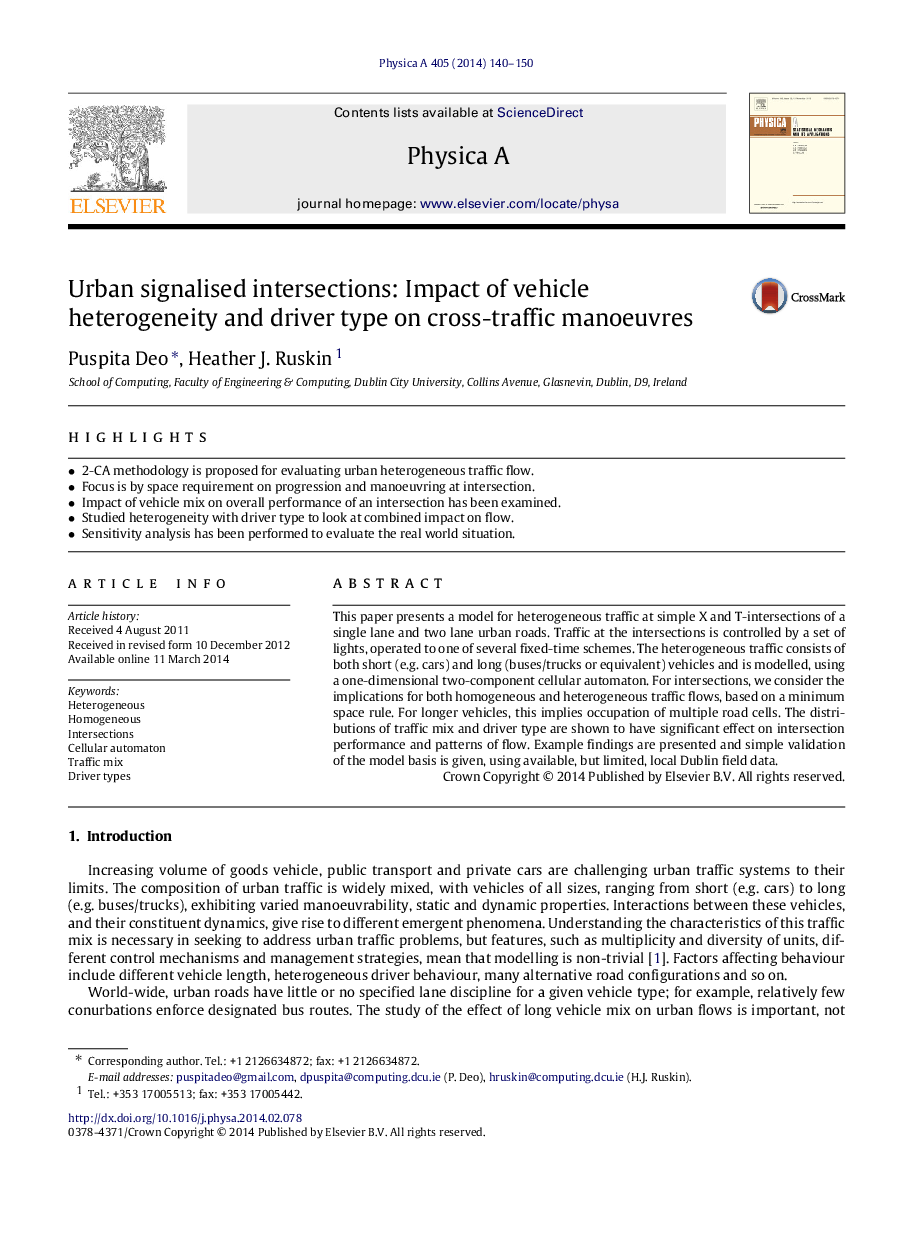| Article ID | Journal | Published Year | Pages | File Type |
|---|---|---|---|---|
| 977338 | Physica A: Statistical Mechanics and its Applications | 2014 | 11 Pages |
•2-CA methodology is proposed for evaluating urban heterogeneous traffic flow.•Focus is by space requirement on progression and manoeuvring at intersection.•Impact of vehicle mix on overall performance of an intersection has been examined.•Studied heterogeneity with driver type to look at combined impact on flow.•Sensitivity analysis has been performed to evaluate the real world situation.
This paper presents a model for heterogeneous traffic at simple X and T-intersections of a single lane and two lane urban roads. Traffic at the intersections is controlled by a set of lights, operated to one of several fixed-time schemes. The heterogeneous traffic consists of both short (e.g. cars) and long (buses/trucks or equivalent) vehicles and is modelled, using a one-dimensional two-component cellular automaton. For intersections, we consider the implications for both homogeneous and heterogeneous traffic flows, based on a minimum space rule. For longer vehicles, this implies occupation of multiple road cells. The distributions of traffic mix and driver type are shown to have significant effect on intersection performance and patterns of flow. Example findings are presented and simple validation of the model basis is given, using available, but limited, local Dublin field data.
